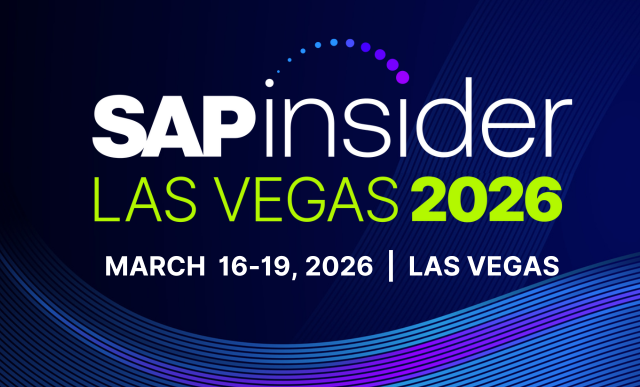SAP General Ledger
Filter By
Browse By
- SAP Analytics and AI
- SAP Application Development and Integration
- All SAP Application Development and Integration
- SAP ABAP
- SAP ABAP Development Tools
- SAP ABAP Test Cockpit
- SAP API Management
- SAP BAPI
- SAP Basis
- SAP BRF
- SAP Business Application Studio
- SAP CMS
- SAP Design Studio
- SAP Development Tools
- SAP DevOps
- SAP EAI
- SAP EDI
- SAP Extension Suite
- SAP Fiori
- SAP Fiori Elements
- SAP Integration Suite
- SAP Low Code Application Development
- SAP Low Code Automation
- SAP Netweaver
- SAP Release Management
- SAP UI5
- SAP Web Application Server
- SAP Web IDE
- SAP Business Process Management
- SAP Center of Excellence
- SAP CIO
- SAP Customer Experience
- SAP Data and Data Management
- All SAP Data and Data Management
- SAP BW
- SAP BW/4HANA
- SAP Crystal Reports
- SAP Data Archiving
- SAP Data Center
- SAP Data Governance
- SAP Data Integration
- SAP Data Migration
- SAP Data Quality
- SAP Data Services
- SAP Data Strategy
- SAP Data Visualization
- SAP Data Warehouse Cloud
- SAP DMS
- SAP Document Control
- SAP EIM
- SAP ETL
- SAP ETL Tools
- SAP HANA
- SAP HANA Administration
- SAP HANA Deployment Infrastructure
- SAP HANA Studio
- SAP Master Data
- SAP Master Data Governance
- SAP MDM
- SAP Enterprise Architect
- SAP Enterprise Asset Management
- SAP ERP
- SAP Finance
- All SAP Finance
- SAP Accounting
- SAP AR AP
- SAP Asset Accounting
- SAP Billing Systems
- SAP BPC
- SAP BRIM
- SAP Cash Management
- SAP Central Finance
- SAP Controlling
- SAP COPA
- SAP Cost Center Accounting
- SAP Currency Risk
- SAP e-invoicing
- SAP FICO
- SAP Finance Automation
- SAP Advanced Financial Closing
- SAP Financial Consolidation
- SAP Financial Planning
- SAP FX Risk
- SAP General Ledger
- SAP Global Tax Management
- SAP Hyperion
- SAP Order to Cash
- SAP Payment Processing
- SAP Profitability Analysis
- SAP Rebate Management
- SAP S/4HANA Finance
- SAP SWIFT Compliance
- SAP Treasury Management
- SAP Universal Journal
- SAP Governance Risk and Compliance
- SAP Human Capital Management
- SAP Intelligent Technologies
- SAP Platform and Technology
- All SAP Platform and Technology
- SAP Business Technology Platform
- SAP Cloud
- SAP Cloud Connector
- SAP Cloud Integration Platform
- SAP Cloud Migration
- SAP Cloud Platform
- SAP Cloud Providers
- SAP Cloud Strategy
- SAP Digital Signature
- SAP Container Platform
- SAP HANA Enterprise Cloud
- SAP Digital Asset Management
- SAP Smart Forms
- SAP HEC
- SAP Digital Integration Hub
- SAP Hyperscalers
- SAP Infrastructure
- SAP Messaging
- SAP Quality and Testing
- SAP Security
- SAP Spend Management
- SAP Supply Chain Management
- All SAP Supply Chain Management
- SAP APO
- SAP Asset Management
- SAP Business Network
- SAP Digital Manufacturing Cloud
- SAP Digital Twin
- SAP EWM
- SAP IBP
- SAP Inventory Management
- SAP Label Printing
- SAP Logistics
- SAP Manufacturing
- SAP Manufacturing Automation
- SAP MES
- SAP MII
- SAP MM
- SAP MRO
- SAP MRP
- SAP Order Management
- SAP Plant Maintenance
- SAP PLM
- SAP Production Planning
- SAP S&OP
- SAP SD
- SAP SPM
- SAP Supply Chain Planning
- SAP Track and Trace
- SAP Transportation Management
- SAP System Administration
SAP General Ledger: An Overview and Key Considerations
What Is SAP General Ledger?
SAP General Ledger (G/L) accounts support the recording of all business transactions, updating balances in real time to provide an extensive view of an organization’s business activities. The former version of SAP General Ledger is referred to as Classic General Ledger (Classic G/L). New G/L leverages an extended data structure that helps finance managers reduce the need for periodic closing activities to synchronize Financial Accounting (FI) and Controlling (CO) modules. This ensures accurate accounting for financial statements.
New SAP General Ledgers support “parallel accounting” functionality, allowing organizations to maintain multiple ledgers for various statutory accounting standards or introduce a special purpose ledger. SAP customers can integrate SAP General Ledger with all operational areas of the company via SAP ERP components to track external and internal transaction postings and settlements. The transactions include business activities originating from profit centers and subsidiary companies, ensuring complete accounting information for generating accurate internal and external financial reporting across the organization.
Key SAP General Ledger functions for entering and evaluating posting data:
- Group-level or company-level accounting capacity
- Subledger items automatically posted to the appropriate general ledger accounts (reconciliation)
- Tight integration of parallel general ledgers and cost accounting areas, allowing for real-time synchronization
- Multiple balance sheet views and account displays of financial information to provide real-time evaluation of and reporting on current posting data.
Key Considerations for SAPinsiders
SAP General Ledger: An Overview and Key Considerations
What Is SAP General Ledger?
SAP General Ledger (G/L) accounts support the recording of all business transactions, updating balances in real time to provide an extensive view of an organization’s business activities. The former version of SAP General Ledger is referred to as Classic General Ledger (Classic G/L). New G/L leverages an extended data structure that helps finance managers reduce the need for periodic closing activities to synchronize Financial Accounting (FI) and Controlling (CO) modules. This ensures accurate accounting for financial statements.
New SAP General Ledgers support “parallel accounting” functionality, allowing organizations to maintain multiple ledgers for various statutory accounting standards or introduce a special purpose ledger. SAP customers can integrate SAP General Ledger with all operational areas of the company via SAP ERP components to track external and internal transaction postings and settlements. The transactions include business activities originating from profit centers and subsidiary companies, ensuring complete accounting information for generating accurate internal and external financial reporting across the organization.
Key SAP General Ledger functions for entering and evaluating posting data:
- Group-level or company-level accounting capacity
- Subledger items automatically posted to the appropriate general ledger accounts (reconciliation)
- Tight integration of parallel general ledgers and cost accounting areas, allowing for real-time synchronization
- Multiple balance sheet views and account displays of financial information to provide real-time evaluation of and reporting on current posting data.
Key Considerations for SAPinsiders
Leverage New G/L functionality for enhanced transaction drilldown capability and auditability. Online document splitting is standard functionality in New G/L, allowing finance managers to review all business transactions across various levels. Those levels include account information, journals, transactions figures and totals, and balance sheet profit/loss evaluations, to audit individual transactions in real time, supported by streamlined access to original documents, line items, and monthly debits/credits.
Evaluate core reporting requirements before establishing new G/L accounts. Information provided for statutory and management accounting tasks is ultimately governed by G/L master data. Business stakeholders or subject matter experts should confirm business processes and master data dependencies properly align with how GL accounts and sub-accounts are defined, to support automation opportunities and integration initiatives.
Consider migration to SAP S/4HANA as an opportunity to optimize G/L accounts. SAP provides pre-built functionality for standard chart of accounts (YCOA) as best practices for organizations, using existing chart of accounts. Organizations can leverage additional granularity from 350+ fields and dimensions, to achieve business process efficiencies in the areas of account maintenance and financial closing activities. Furthermore, finance managers can benefit from new G/L and Universal Journal functionality to update existing chart of accounts to better align with legal entities and business process needs across industry, operating regions, company size, corporate structure, etc.
17 results
-

Inside the Value of the SAP S/4HANA for Financial Products Subledger Solution: Insurance Provider Swiss Re Teams with SAP to Take SAP S/4HANA for Financial Products Subledger to the Next Level
Reading time: 6 mins
by Esther Shein, Contributing Writer, SAPinsider Digital transformation is paving the way for insurance companies to modernize their processes and Swiss Re, one of the world’s largest wholesale insurance and reinsurance providers, has partnered with SAP to develop and test its SAP S/4HANA for Financial Products Subledger (FPSL). This innovative solution provides concurrent accounting across multiple accounting bases...…
-

A Comprehensive Subledger Solution For Finance Transformation
Reading time: 1 min
Simplify accounting for financial products with SAP. Membership Required You must be a member to access this content.View Membership LevelsAlready a member? Log in here
-

Regain Control of SAP Journal Entries
Reading time: 2 mins
Many companies struggle with a variety of problems regarding their journal entry processes — such as approval procedures, accounting requirements, and complex workflows — that are unique to their business. A good number of these are SAP customers that continue to collect, route, and manage their journal entries with manual processes, emails, and spreadsheets, which…
-
-

- SAP General Ledger
 Premium
Premium
Financials: Case study: Learn how Tennant Company executed an on-time, on-budget migration to the new general ledger
Reading time: 1 mins
Learn how Tennant Company undertook a meticulously planned migration to the new general ledger. FIN2017_Croom_Sunkavalli_Casestudylearnhowtennant Ashok Sunkavalli If you have comments about this article or publication, or would like to submit an article idea, please contact the editor. Philip Croom If you have comments about this article or publication, or would like to submit an...…
-

- SAP General Ledger
 Premium
Premium
Best Practices to Manage a Smooth Chart-of-Accounts Conversion in an SAP Environment
Reading time: 10 mins
You are a massive global organization with a complex system landscape and want to embark upon an SAP General Ledger (formerly known as new G/L) or SAP S/4HANA journey. These best practices help you clean up and standardize key processes or data to prepare for a chart-of-accounts (COA) conversion. Key Concept Once the SAP system...…
-

- SAP General Ledger
 Premium
Premium
Reap Benefits from One of SAP’s Hidden Treasures: Liquidity Planner Actuals Determination
Reading time: 19 mins
Learn how SAP’s Liquidity Planner module for actuals determination works. Discover the advantages and uses of the module. Key Concept SAP’s Liquidity Planner module for actuals answers questions such as how much cash came in related to customer receipts this week or how much was spent on payroll this month. Having quick, up-to-date access to...…
-

- SAP General Ledger
 Premium
Premium
How to Use the Extension Ledger Functionality in SAP S/4HANA Finance
Reading time: 14 mins
Learn how to configure and implement the new Extension Ledger functionality in SAP S/4HANA Finance. Find out how to deactivate a ledger in a company code. Key Concept The Extension Ledger, which is only available in SAP S/4HANA Finance, helps you to save space in the database. You can use it to avoid duplication of...…
Become a Member
Unlimited access to thousands of resources for SAP-specific expertise that can only be found here.
Become a Partner
Access exclusive SAP insights, expert marketing strategies, and high-value services including research reports, webinars, and buyers' guides, all designed to boost your campaign ROI by up to 50% within the SAP ecosystem.
Upcoming Events
Related Vendors
Your request has been successfully sent


